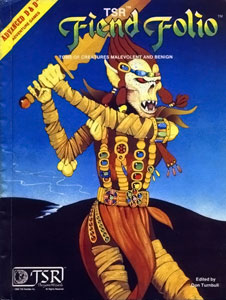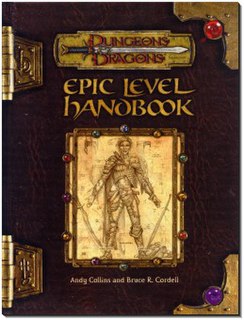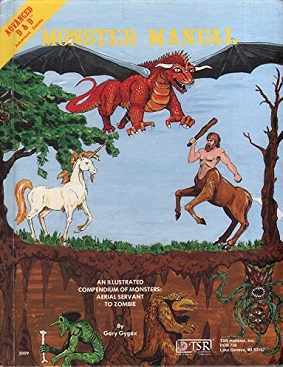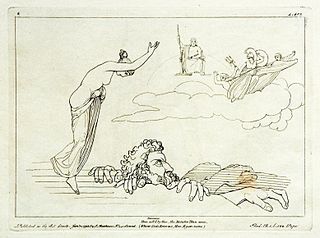
Fiend Folio is any of three products published for successive editions of the fantasy role-playing game Dungeons & Dragons (D&D). All three are collections of monsters.
Fiends is a term used in the Dungeons & Dragons fantasy role-playing game to refer to any malicious otherworldly creatures within the Dungeons & Dragons universe. These include various races of demons and devils that are of an evil alignment and hail from the Lower Planes. All fiends are extraplanar outsiders.
In the Dungeons & Dragons fantasy role-playing game, demons are the most widespread race of fiends. The demons are chaotic evil by nature, and are native to the Abyss. Demons have no true rulers, though powerful demon lords are able to gain enough power and influence to gain control over sizable armies of demonic creatures.
In the Dungeons & Dragons roleplaying game, devils are a powerful group of monsters used as a high-level challenge for players of the game. Devils are Lawful Evil in alignment and originate from the Nine Hells of Baator. True to their Lawful Evil alignment, devils are locked in a strict and brutal hierarchy. At the top of the hierarchy are the supreme Archdevils or Lords of the Nine, who are the rulers of the different regions of Baator. Devils often see the various worlds in the D&D metacosmos as tools to use for their own ends, including prosecuting the Blood War, a millennia-long war between the devils and their arch-enemies, demons.

In the Dungeons & Dragons fantasy role-playing game, svirfneblin, or deep gnomes, are a sub-race of gnome.

In the fictional world of the Dungeons & Dragons fantasy role-playing game, mephits are extraplanar creatures similar to imps.
In the Dungeons & Dragons fantasy role-playing game, celestials are a class of creatures and monsters known as outsiders who are of wholly good alignment.
In the World of Greyhawk campaign setting and the default pantheon of deities for the third edition of the Dungeons & Dragons fantasy role-playing game, Erythnul is the Oeridian god of hate, envy, malice, panic, ugliness, and slaughter. He is known as the Many, and is worshipped by many gnoll, troll, ogre, and bugbear tribes, in addition to humans. His symbol is a red blood drop, or a bestial mask representing Erythnul's changing visage.
In Dungeons & Dragons, Fey is a category of creatures. The fey deities are associated with the Seelie Court and the Unseelie Court. Titania is the general fey deity, with individual races like the Killmoulis who worship Caoimhin. Fey are usually humanoid in form and generally have supernatural abilities and a connection to nature. The Sylph is one creature which has a Fey appearance, but is officially recognized as an outsider creature type.

In the Dungeons & Dragons fantasy role-playing game, nagas comprise a variety of similar species of intelligent aberrations with widely differing abilities and alignments.
In the Dungeons & Dragons fantasy role-playing game, an outsider is a type of creature, or "creature type". Outsiders are at least partially composed of the essence of a plane other than the Prime Material Plane.
In the Dungeons & Dragons fantasy role-playing game, the lillend is a benevolent half-snake outsider; a being from another plane.

In the Dungeons & Dragons fantasy role-playing game, the hellcat is a type of evil creature related to devils.

Cryonax is a wicked archomental, the Prince of Evil Cold Creatures, in the Dungeons & Dragons fantasy role-playing game. His symbol is either a blue-white circle within a square or a silver snowflake.

In the Dungeons & Dragons fantasy role-playing game, the ophidian is a type of monstrous humanoid.
This is the Index of Advanced Dungeons & Dragons 1st edition monsters, an important element of that role-playing game. This list only includes monsters from official Advanced Dungeons & Dragons 1st Edition supplements published by TSR, Inc. or Wizards of the Coast, not licensed or unlicensed third party products such as video games or unlicensed Advanced Dungeons & Dragons 2nd Edition manuals.













